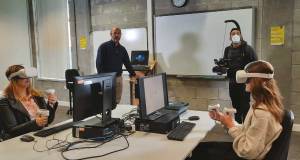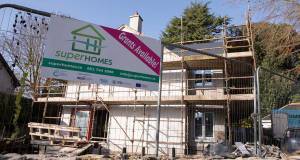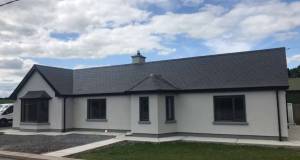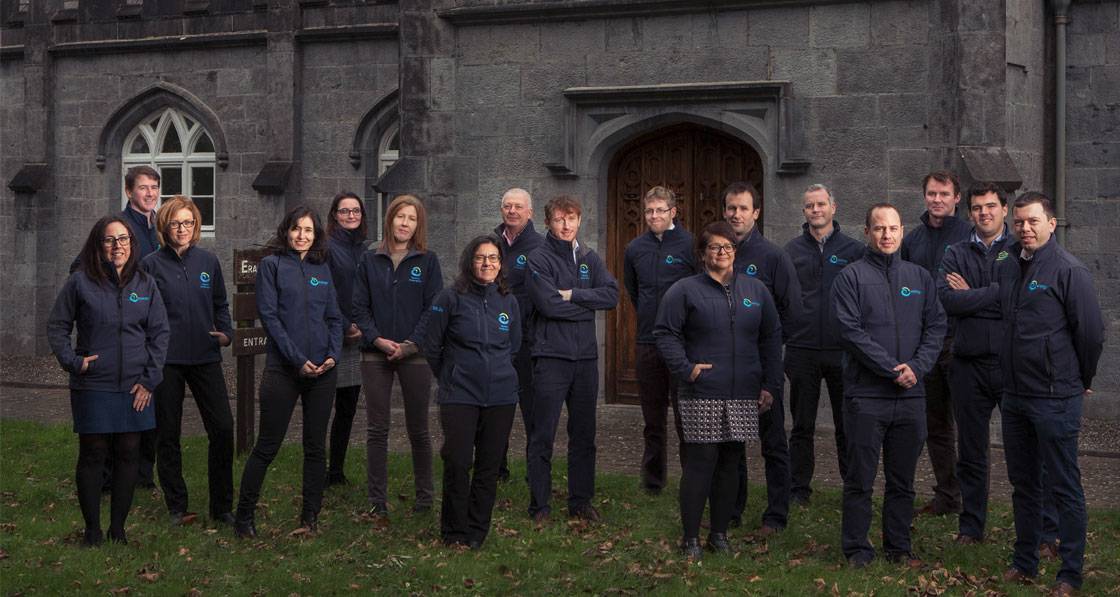
- Feature
- Posted
Tipperary Energy Agency at 20
One of Ireland’s pioneering and most consequential green organisations, Tipperary Energy Agency, turned 20 at the end of February, evolving from one man buried in sawdust to a 24 strong team whose efforts are influencing national policy and earning European plaudits. But why has the agency endured and grown, and what lessons can be learned to help others play their part in delivering the transition we so urgently need to low energy buildings and clean energy generation? Two of the central figures in the agency’s development spill the beans, along with some of the many partners the agency has worked with over the years.
This article was originally published in issue 25 of Passive House Plus magazine. Want immediate access to all back issues and exclusive extra content? Click here to subscribe for as little as €10, or click here to receive the next issue free of charge
Working with communities, chasing kilowatt hours
By Tipperary Energy Agency founder, Seamus Hoyne
Reflecting back on 20 years of the Tipperary Energy Agency presents an opportunity to reminisce on an amazing journey. From the outset the agency has been about partnership. Tipperary Institute and the then North and South Tipperary County Councils joined forces to apply to the highly successful EU SAVE programme to fund the development of the Agency (over 300 such Energy Agencies were established across Europe).
At the same time that the TEA was being established a new agency was also set up in Larissa, Greece with both new agencies being mentored by the Styrian Energy Agency in Austria. I landed the job as the manager in February 1998 and was given a 300 page document (the EU proposal), a mobile phone, and directions to a small office over the then South Tipperary area offices in Cahir. There was a promise of an office space in the old VEC School building in Cahir which I was told needed “some work” (this turned out to be the woodwork room which still had a large saw and two significant piles of saw dust). From these humble beginnings the agency now occupies two offices in Cahir and Nenagh.
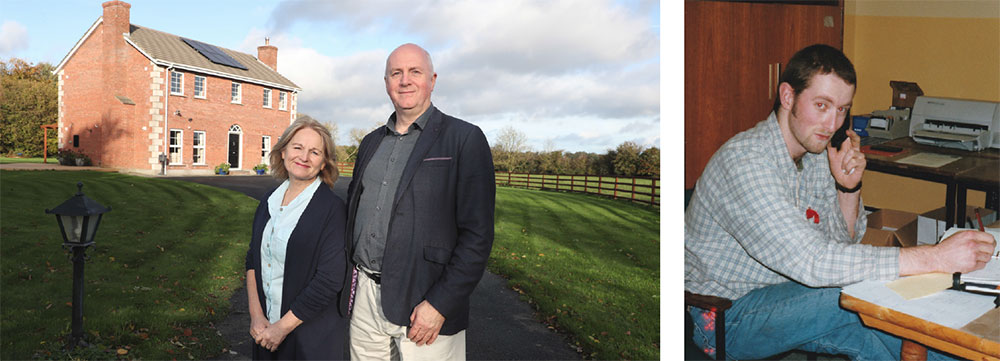
(above left) SuperHomes participants Neil and Aileen Walker are thrilled with the comfort and enery savings at their A-rated retrofit in north Dublin; (above right) Tipperary Energy Agency founder Seamus Hoyne in the agency’s rudimentary original offices in the late 90s.
From an organisational perspective the vision from the agency from the outset was focused on partnership, sustainability and community engagement. However, without the agency being able to justify its existence and generate income for itself it was not going to be in a position to affect change in the region. With this in mind the first business plan was written in month one as I viewed the grant from the EU as a “bank loan” for the first three years.
Early on I visited the Styrian Energy Agency to gain their insights. Arriving in Graz in September 1998 I met the agency director, Mr Gerhard Ulz. During three intensive days of activity where I was exposed to a fantastic learning experience the biggest memory I have is Gerhard telling me on day one, “There are two important things you need to do to have a successful energy agency. First make sure you have refreshments in the office for your visitors (Gerhard had a special drinks cabinet) and second is find the crazy people”. When pushed on the “crazy” people Gerhard meant that you needed to find those people who will go beyond the norm, who will challenge the status quo, who will ask the difficult questions. His advice was to put some of them on the board, get involved with them on projects and support them to reach their ambitions.
The board of the agency has changed over the years but the common feature has been vision and ambition. The board in the first three years guided the agency to a position where agreement was reached between Tipperary Institute and the councils to continue to fund it after the EU SAVE Contract.
To put this in context, over 30% of all energy agencies funded under SAVE did not continue after their initial contract.
The early milestone came when I met with John Fogarty and others from the Templederry area of Co. Tipperary. John (who I now affectionately refer to as one of my crazy people) and his team had a vision to use the natural resources in their area to the best advantage of the community. The first meeting was in 1999. Over 10 years later the Templederry Community Wind Farm started generating electricity. This project is one of the many visual demonstrations of why local/ regional energy agencies are needed. Without the agency many of the steps in the development process for the community group wouldn’t have been achieved – but likewise without the community the agency would not have been able to deliver the project. We have managed to find lots more local and community-driven initiatives since.
When I sat down with Paul Kenny (now CEO) in 2006 when he joined the agency first, we looked through a pile of 15-20 energy audits of local authority sites. That day we made a decision to translate the words in those reports to actual kilowatt hours saved (or generated).
The decisions at that point to move to a more action-orientated approach was, on reflection, momentous as it meant that we now had to work really hard on convincing people to invest, we had to get better at procurement and we had to maximise funding availability to support the business case for investment.
The final highlight which I’ll select is the securing of the major EU contract under the CONCERTO programme to implement the SERVE project. Led by Tipperary Institute with partners in five EU Countries and involving an investment of €10.4m, this funding allowed Tipperary Energy Agency to scale and hire new staff. It enabled it to develop real expertise in retrofitting of buildings, heat energy contracts and many other aspects. It also provided a financial buffer to maintain the agency during the challenging financial crises.
The agency has been extremely fortunate to recruit the right people at the right time during the different phases of its growth. Like any organisation people have come and gone, but the one characteristic which they have all shared is their commitment to the cause of sustainable energy and climate change. Many late nights have been spent writing proposals and completing tasks. Many cups of tea in meetings, with everyone from homeowners to politicians, convincing, confirming, and cajoling people to take the right decisions.
From students on work experience to long term employees, they have all left their mark on the agency and made it is what it is today. The vision for the future is safe in their hands as we now have over 20 of our own crazy people to get things done!
It’s about challenging the status quo, & fighting fossil fuels
By Tipperary Energy Agency CEO Paul Kenny
In December 2006 I joined the energy agency from a large multinational, inspired by the desire to spend more time engineering and make a difference. I had completed a certificate in renewable energy development in Tipperary Institute and was eager to get involved. It’s something that we look for in all staff when we recruit: someone who has a desire to make a difference, someone who doesn’t accept the status quo, someone who doesn’t accept that fossil fuels should be part of our future.

(left) Tipperary Energy Agency CEO Paul Kenny; (right) SuperHomes participant Aileen McCarthy, who suffers from respiratory problems, says her health has been transformed post retrofit.
When I started I was introduced to a very different culture of work, a culture of trying to make a difference, a culture of being introduced to the deep end and most importantly a culture where there was no fear of failure. If something went wrong, it was always a case of we’ll do better together the next time. This no fear of failure is one of the key reasons why the agency has delivered innovation, change and some influential projects. This culture of attempting to do things that we weren’t sure we could deliver made, and still makes, Tipperary Energy Agency such a brilliant place to work.
The agency participated in over 30 EU projects, which allowed us to see and touch the types of things that are needed to make the energy transition happen – from district heating in Scandinavia, to biomass boilers in Austria, to the citizen-led energy transition in Germany. This European education has been a bedrock of the agency’s perceived innovations. We have built on this to deliver significant large projects of national importance, to help break the ice on PV, on biomass boilers and on heat pumps, and most importantly making the energy transition a little more mainstream.
Today, with support from the European Investment Bank’s ELENA programme, we have the ability to really ratchet up the investment at home with European help for developing sustainable energy investments across most sectors of the Tipperary economy.
Over the last five years, we have realised that specifying works on a design-build basis was at its limit and wasn’t delivering the standards of works that our clients wanted. It was appropriate for simple works, insulation and shallow retrofit domestic sector. We realised that asking for challenging innovative technical solutions from the contracting sector was not going to deliver the potential that the technology could achieve. So from late 2015, we’ve grown our design office to include residential and non-residential capabilities to provide a full end-to-end service – a one-stop-shop development where our staff can do an energy audit, design a retrofit, apply for grant support, procure, project manage, and sign off the investment.
People who wish to embark on the energy transition, make their home warmer, or their business more efficient need support.
The technical engineering solutions aren’t easy, and people need the technical help to deliver high quality projects. There is a second task that we now do, and that is the sales pitch for the energy transition. It isn’t overt, but it’s there. We don’t want people to complete an energy audit and leave it on a shelf, we want people to decide to invest and reduce costs, CO2 and fossil fuel use. Our team always feel that the goal of an energy audit is investment, never just identifying a potential solution.
We developed the Superhomes Deep retrofit programme to support homeowners to move away from cold damp homes heated by fossil fuels. It originally came from the challenge in meeting the decarbonisation targets for Irish homes and simultaneously making them warmer, healthier and cheaper to run. We were being told that heat pumps wouldn’t work in Ireland, and that ventilation through holes in walls was fine (even though we knew it wasn’t). We researched solutions and presented a pilot proposal to our national energy agency, who funded homeowners to upgrade their homes for the last three years.
The next 20 years will require every building to be retrofitted, every citizen to become an active energy citizen and every organisation to decide to move away from fossil fuels. In order to achieve this goal, we will need to have accessible technical solutions but also accessible financial solutions that mixes grant supports, low-cost finance, carbon taxes and the confidence for people to be able to use these solutions. That’s our goal – to figure out these solutions, to try and fail and try again until we have the solutions to scale the energy transition, until it’s available easily for every citizen and organisation.
Richard Sherlock, National sales manager, Mitsubishi Electric
Mitsubishi Electric have been strong supporters of the Tipperary Energy Agency Superhomes scheme since its inception. This is a highly important program offering householders a high quality holistic retrofit package which always includes an air source heat pump at the centre of its offering.
The program is very important for Mitsubishi Electric and our commitment to the Irish market in terms of demonstrating, publishing and proving the real-life performance of heat pumps in retrofitted Irish houses of all types. The research being conducted at multiple levels – up to PhD – will assist in the sustainable growth of the heat pump sector and assist in no small way in meeting Ireland’s energy saving obligations.
Mitsubishi Electric have supplied the vast majority of heat pumps on the Superhomes schemes to date and we have taken the opportunity to use Ireland as a European research base. There is regular interaction with our European research teams which will help form the base for the next generation of heat pumps we design and manufacture. Conjoined with this research we are also exploring the funding of a PhD researcher in this area with NUIG, which we at Mitsubishi Electric feel further demonstrates our commitment to the Irish market, following 35 years in business in Ireland.
Superhomes is critical to the development of a high quality retrofit offering in the market and in the proving that heat pumps are the way forward in all Irish housing. I hope the results will be listened to and acted upon by policy makers.
Simon Jones, Commercial director UK & Ireland, Aereco
Ventilation and retrofit sometimes feel a little like oil and water. The retrofit sector as an industry has struggled at times to deal effectively with the concept and we are already paying the price in some cases.
Tipperary Energy Agency should be credited as one of the early adopters of the concept of designed ventilation strategies for retrofit, and their robust stance on no effective ventilation, no retrofit, is a credit to them. (Specifically this means a fan-driven ventilation system set up to reliably achieve a predictable, acceptable number of air changes).
They have shown the way and many, including state-funded schemes are now following - something I am not convinced would have happened without them.
Their end-to-end approach has driven the take-up of the Superhomes scheme, but their approach to quality assurance has also played a very big part. How many successive retrofits are as a result of the positive feedback from previous participants of the scheme? If any scheme going forward is to succeed and build to the scale necessary, there’s a lot to learn from Tipperary Energy Agency’s approach to quality assurance on the supply chain and the delivery of retrofit projects.
Sustainable Tipp – action plan for major CO2 cuts by 2020
Recognising the need for immediate and short term cuts in carbon emissions – given the climate change tipping point the world faces – Tipperary Energy Agency has developed Sustainable Tipp, an action plan to deliver energy transformation of Tipperary’s housing, commercial, public and community buildings over three years.
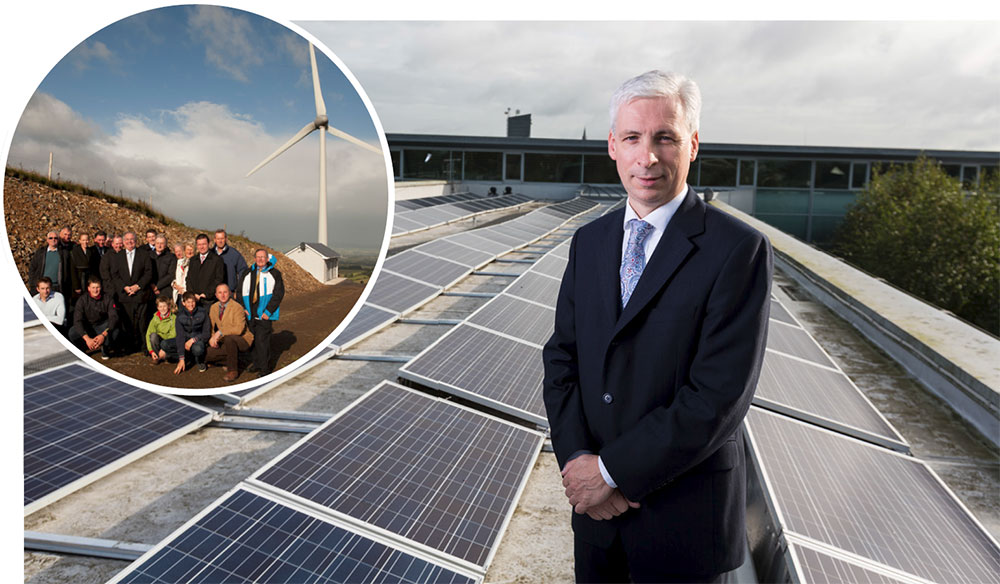
Some of the projects supported by the agency over the years including Templederry Community Wind Farm (left) and the 45kW solar PV array on the roof of the Tipperary County Council building in Nenagh (seen here with council CEO Joe McGrath)
It is an opportunity for communities, farmers, homeowners and business owners to save energy, save money and become more sustainable.
In 2017 Tipperary’s Sustainable Energy Action Plan (SEAP) was formally adopted by Tipperary County Council. This plan was created following Tipperary’s commitment to The Covenant of Mayors, the world’s largest movement for local climate and energy actions. This plan explains the steps that need to be taken to reduce Tipperary’s CO2 emissions by 30% by 2020.
That same year, Tipperary Energy Agency, announced that the European Investment Bank (EIB) is to support the actions of the SEAP. This action plan includes 32 actions which will reduce Tipperary’s energy related CO2 emissions by 2020. These actions cover a wide range of sectors including agriculture, education, planning, residential, local authority and the commercial sector.
Following the approval of the SEAP for County Tipperary and the support from the European Investment Bank, Sustainable Tipp was born. Sustainable Tipp will endeavour to keep Tipperary citizens up to date on the actions and progress of the SEAP, as there are opportunities for everyone in Tipperary.
The main objectives of Sustainable Tipp are:
- To promote and encourage greater energy efficiency in Tipperary
- To reduce Tipperary’s dependency on imported energy by encouraging renewable developments
- To create employment through the deployment of renewable infrastructure and widespread energy efficiency upgrades
- To reduce energy poverty
- To ensure that small and medium sized businesses are made aware of the financial rewards associated with increased energy efficiency
- To raise awareness of Tipperary’s obligations and opportunities in renewable energy and energy efficiency
- To foster the opportunities in energy efficiency and production in the agricultural sector
- To facilitate greater capacity building within all associated institutions
Paul O'Brien, SOLA Energy Solutions
We first worked with Tipperary Energy Agency on the Serve Project in 2009-2010 – retrofitting solar thermal on existing houses in North Tipperary.
In 2012 we fitted two air source heat pumps for the agency in an outdoor swimming pool in Ballina, in North Tipperary, which is open from June to September. They’ve been hugely successful – running costs of about €30 per day. In another early project with them we fitted PV arrays on nine public buildings. The council saved €30,000 in the first year.
We worked hand-in-hand with Paul Kenny on some of the first jobs – he was out getting his hands dirty commissioning heat pumps to get the COPs to where they should be.
The way the Superhomes grants materialised, you had to be doing a combined fabric upgrade. Their knowledge and the way they manage the design process gave us the confidence to start acting as main contractor, and subbing in the insulation works to specialist subcontractors. It’s broadened our spectrum of work, and we’re now able to act as a main contractor on retrofits and extensions.
We have peace of mind if Tipperary Energy Agency spec out a house – we know the heating system won’t be undersized. They do an itemised bill of quantities. If the house is done to the spec they provide there’s no issue with the heat pump performing. They do all the heat load calculations room by room. They have a good team.
We love the challenge of deep retrofit. People are living in the house before we start and they can see the transformation afterwards. Working with the agency gave us the confidence that we could branch into other areas. Only for them, we wouldn’t be where we are today.


